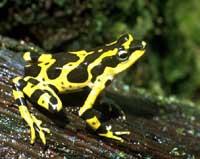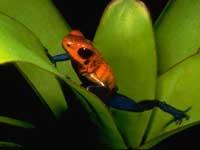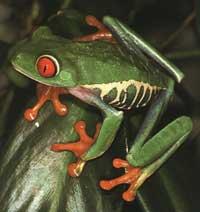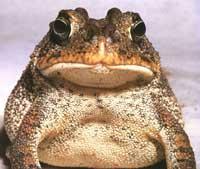The frog song is closing

Amphibians have long lived on Earth. They are themed animals that have been trying to survive for 300 million years. The current one is the largest and fastest extinction they have suffered, and although in general it is difficult to speak, the risk zones are temperate regions of high altitude and tropical zones. The largest population losses have been recorded in Costa Rica, Panama, Venezuela, Australia, the United States and Canada. The destruction is more spectacular than in amphibians who have a water-oriented life.
At a congress held in England in 1989 the mass extinction of amphibians was first announced. Informal dialogue among participants made clear that something was wrong. The cloudy forest of Costa Rica, the tropical rain forest of eastern Australia and the frogs that lived in the eastern mountains of Brazil, suddenly and at the same time, presented huge population losses could not be the result of chance. Research in the coming years confirmed the suspicions at the English meeting and the researchers quickly began to seek answers.
International studies
Although the first sounds about mass extinction were heard in the late 1980s, extinction itself began earlier. Last April it was published in the scientific journal Nature that amphibians are disappearing since the 1950s. 200 researchers from 37 countries have analyzed 936 amphibian populations between 2 and 31 years. A total of 157 species of toads, frogs, tritons and arrabio have been investigated. Being the largest sample in history you can check the worldwide shelf life of amphibians. The conclusion of the report is clear: amphibians are disappearing all over the world and very quickly. During the study 61 populations have been lost forever.
Amphibian populations have declined in the last 40 years between 4 and 5% annually. The hardest time dates back to the 1960s: Between 1960 and 1966, 15% of the population was lost annually, and from then until 1997, it fell by 2% annually. After the collapse of the 1960s, European amphibian populations stabilized, but not so in America and Australia. Moreover, researchers consider it a disaster that occurred there.

The essential question is immediate. Why? Why do amphibians die from all four parts of the world? How all at once? Some ecological disasters have easily identifiable sources such as oil spills or landfills from mines. But in the case of amphibians, expiration has many and complex reasons. Are pollution and habitat loss responsible? Extinctions do not appear to occur in natural parks and protected areas. Are amphibians destroyed by predators brought by man? Not that either, because in those cases all species disappear at the same time.
Diseases
For any reason, it has captured a lot of habitats scattered across all continents. Therefore, the first conclusion is that if it is a global extinction, the agent must necessarily be global. Biologists have had several hypotheses: increased ultraviolet radiation received by amphibians due to thinning ozone layer, acid rain, pesticides and herbicides... But the most powerful hypothesis is the epidemic.
The disease is due to a fungus that has been found in the bodies of frogs collected in the United States, Australia, Costa Rica and Panama. This fungus has never sickened vertebrates so far.

Although other bacteria, fungi, and viruses have already been found to attack frogs and hares, this is the first time this massacre has occurred. As fungus usually appears in aquatic environments, the epidemic hypothesis also indicates a higher degree of disease to amphibians living in water.
All people who study amphibian extinction are increasingly sure to kill animals with the aforementioned fungus. Inevitably, the following question is: Why has a fungus that only attacked frogs from time to time become a perverse killer? Among the possible causes is the mutation suffered by the fungus or infection by some virus, and it is also being investigated if the immune system of amphibians has weakened.
In areas where massive animal deaths have occurred, high concentrations of toxic chemical compounds from pesticides and high-intensity ultraviolet radiation have been found. These two factors are considered to have weakened amphibians and have therefore become more vulnerable to fungus attacks. However, it is the way back and forth. Changes in the environment may have weakened amphibians, but that same environmental change has strengthened the fungus. Or both at once.

Amphibians around the world are dying. More research and more rigorous research will be needed if disaster factors are to be well consolidated and disaster dominated. Meanwhile, the risk is still there. Has the fungus already attacked the hardest? Is it limited only to amphibians of high altitudes? In the 1980s, the fungus that killed Australian oriental frogs killed several frogs from the southwest last year. For this he had to travel through a dry desert and long distances. But how has the fungus that dwells in the desert water happened? Not only in Australia, but also in regions of small American altitudes.
In general, little is known about the conservation status of the 4,500 amphibian species that inhabit nature and no data on African frogs have been collected. The change that has caused massive environmental destruction remains to be seen. But are not amphibians the canaries of nature?
Environmental health indicatorsAmphibians are an important part of the ecological balance: In the north of the Amazon more than 80 species have been found, twice as much as in all of Europe, in very specific areas. In some places, especially in temperate areas, amphibians are prized prey and at the same time excellent predators. Useful substances can be extracted from the surface of amphibians in medicine. Moreover, it is a very interesting field of research. In Australia there is a white frog that controls mosquito pests. In Euskal Herria we also have our special frog, the southern frog. This frog is not sick (at least) but is in danger of extinction. It only lives on Mount Mendizorrotz, bounded by Orio, Usurbil and Donostia, and its surroundings have changed. Environmentalists fear that they will adapt and take artificial reservoirs from the natural reservoirs in which they lived. If before there were no problems to preserve this frog, only the disease should appear. Human activity is transforming the environment and the loss of biodiversity we are observing is a direct consequence of that transformation. By changing the environment for our use, we destroy wildlife habitats and put wildlife into extinction. But there are also slower changes (thinning of the ozone layer, climate change...) and their effects are unknown. The distress amphibians are suffering can be a way to respond to all these acute changes. Therefore, we must take into account this rapid disappearance of amphibians. |
Published in the supplement Natura de Gara
Buletina
Bidali zure helbide elektronikoa eta jaso asteroko buletina zure sarrera-ontzian











